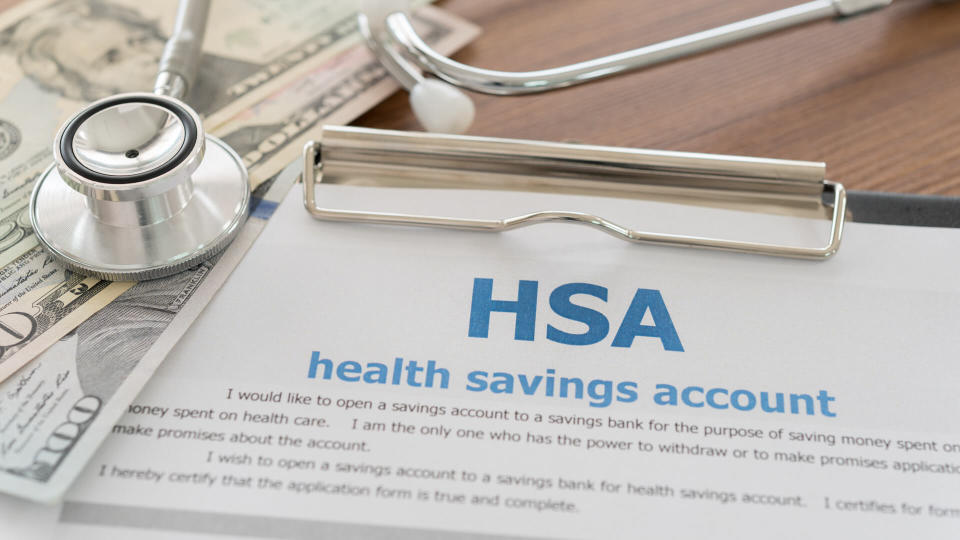Employers Expect Healthcare Costs To Spike in 2024 — What Does It Mean for You?

It’s no secret that healthcare costs in the U.S. are very high, and many experts predict these costs will continue to increase.
As Reuters reported, U.S. employers are bracing for the largest increase in health insurance costs in a decade next year. Citing a recent Mercer report, Reuters noted that employer healthcare costs are expected to jump 5.4% to 8.5% in 2024 due to medical inflation, soaring demand for costly weight-loss drugs and wider availability of high-priced gene therapies.
Discover: 5 Ways People Become Poor While Earning an Average Salary
Learn: How To Get Cash Back on Your Everyday Purchases
To put this in context, it’s important to note that the U.S. already has one of the highest costs of healthcare in the world.
According to the Peter G. Peterson Foundation, in 2021, U.S. healthcare spending reached $4.3 trillion, which averaged to about $12,900 per person. Healthcare in other wealthy countries costs about half as much.
According to the Milliman Medical Index, the 2023 cost of healthcare for a hypothetical family of four covered by a PPO plan through their employer will reach a whopping $31,065, up 5.6% from 2022.
What Does It Mean for Employees?
Against this backdrop and in a bit of good news for Americans, the Mercer survey found that two-thirds of employers either do not plan to shift any cost increase to their staff or will pass on less than the expected rise in 2024.
“They don’t want to add more financial stress on employees who are also coping with inflation, especially in this time where they’re really relying on their health benefits as a way to keep employees working for them,” Beth Umland, Mercer’s director of health and benefits research, told Reuters.
Check Out: 10 Frugal Money Habits That You Need to Embrace
How Can Consumers Manage Rising Healthcare Costs?
“The cost of healthcare keeps rising, which causes health insurance to rise. You are very fortunate if your employer does not raise your contribution amount,” said Jay Zigmont, Ph.D., CFP, founder of Childfree Wealth.
Zigmont said many employers have moved to a percentage-based system, meaning they may cover 70% of the healthcare cost and you cover the other 30%.
“In a percentage-based system,” he said, “you would expect your contribution to increase yearly. If your raise does not cover the increase in healthcare costs, you will end up with less in your pocket.”
Zigmont recommended looking for healthy workplace programs as a way to defray healthcare premiums.
“Many employers and insurance companies now offer wellness programs that offer a discount if you get preventative care, lower your blood pressure, stop smoking and more,” he said. “Keep in mind to get the discount you need to participate each year, and your entire family may also have to participate.”
With these increasing prices, it’s not surprising that many Americans said they had to delay medical treatment.
Indeed, a Gallup poll found that the percentage of Americans reporting they or a family member postponed medical treatment in 2022 due to cost rose 12 points in one year, to 38%, the highest in Gallup’s 22-year trend.
Additional Ways To Help You Lower Healthcare Costs
According to MedlinePlus, which is part of the National Institutes of Health (NIH) there are several ways that can help you manage medical costs.
Save Money on Medicines
For example, ask your healthcare provider whether you can switch to generic medicines, or a less expensive medicine that treats the same condition.
Use Your Benefits
MedlinePlus recommends, for example, getting routine health screenings, as these can detect health problems early, when they may be more easily treated.
Plan Ahead for Urgent and Emergency Care
“When an illness or injury occurs, you need to decide how serious it is and how soon to get medical care. This will help you choose whether to call your provider, go to an urgent care clinic or get emergency care,” according to MedlinePlus.
Choose In-Network Health Care Providers
Providers who are in network are less costly because they have a contract with your health plan.
Choose a Health Plan That Is Right for You
Make sure you pick a plan that’s best suited for you and your family’s needs. More expensive plans cover more health costs, which may be a good idea if you have a health problem, such as diabetes, and need regular care, noted MedlinePlus.
Also make sure to compare prescription drug coverage.
Use a Health Care Savings Account (HSA) or Flexible Spending Account (FSA)
As healthcare.gov explains, an HSA is a type of savings account that lets you set aside money on a pre-tax basis to pay for qualified medical expenses. By using untaxed dollars in an HSA to pay for deductibles, copayments, coinsurance and some other expenses, you may be able to lower your overall healthcare costs.
Prescription Discount Cards
Medication costs continue to rise year after year, but one of the ways consumers can manage rising drug costs is through a prescription discount card, said Alexandra Robertson, senior vice president of growth at Visory Health.
She said these cards are completely free to use, don’t require insurance and can offer discounts of up to 80% on medications.
She added that education is key, and understanding that there are alternatives is important for consumers.
“It’s critically important that consumers understand that options like Visory are available to them,” she said, “especially as we approach a new year, which often for people means their deductibles start all over again.”
More From GOBankingRates
This article originally appeared on GOBankingRates.com: Employers Expect Healthcare Costs To Spike in 2024 — What Does It Mean for You?

 Yahoo Finance
Yahoo Finance 